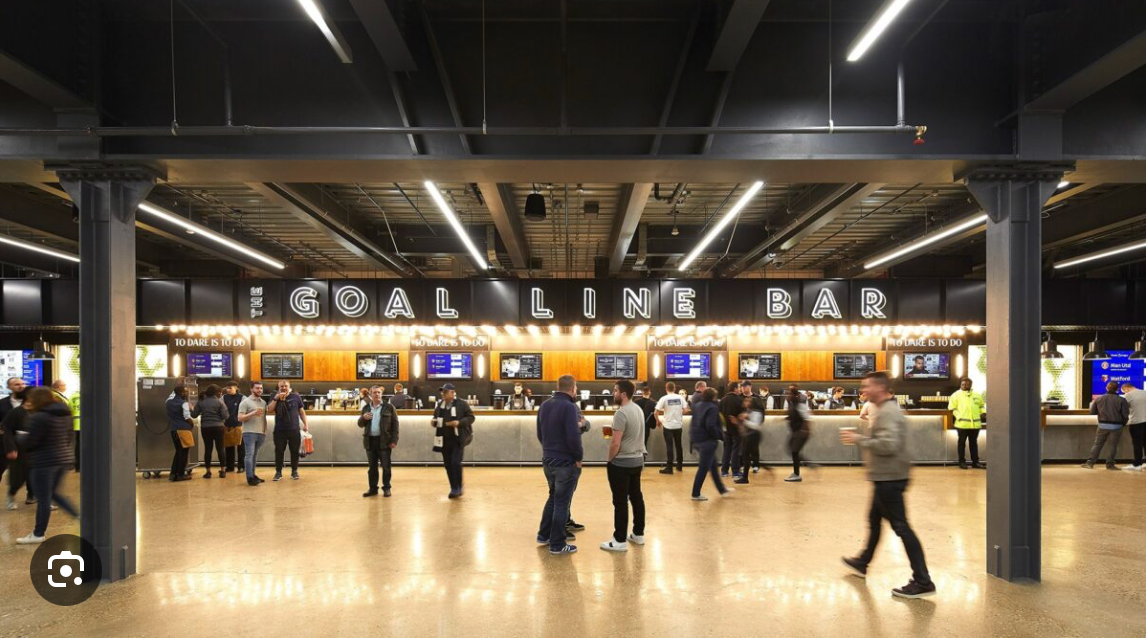
Inside the Modern Stadium: How Matchdays Became Marketing Experiences
Football fans throughout multiple generations have discovered their deepest happiness through watching their team’s matches, starting from their stadium travels to pre-game excitement until the teams pitch entrance. The traditional football matchday experience served as a sacred tradition which brought supporters together through their collective team spirit and shared values. But matchdays have now changed.
Football has evolved into a worldwide entertainment industry which delivers fans with experiences that extend beyond the standard 90 minutes of football action. The stadium provides visitors with technological amenities and entertainment options and hospitality services, and storytelling experiences, which strengthen their bonds with the venue and generate additional revenue streams. Modern football clubs depend on matchdays as a core marketing tool.
The Stadium as a Brand Asset
Stadiums in the present day fulfil two essential functions because they provide football venues and function as strategic brand development centres. The design elements and event spaces, and fan areas in stadiums function as brand messengers to express the values of their respective clubs.
The Tottenham Hotspur Stadium stands as one of the most sophisticated stadiums worldwide. The stadium operates throughout the entire year because it hosts NFL games and concerts, and community events in addition to football matches. Through its partnerships, the stadium attracts visitors from all over the world, which positions it as a vital element of Tottenham's commercial brand.
Everton’s new Hill Dickinson Stadium represents a complete transformation of the club. The stadium serves as a regeneration symbol for Liverpool, uniting traditional local heritage with contemporary development goals. It acts as both a cultural and economic landmark for the city, reflecting Everton’s commitment to sustainability and community development.
Manchester City and Liverpool have enhanced their stadiums through the addition of fan zones and interactive museum tours, and themed dining areas, which deepens their connection with supporters.
Technology and Fan Engagement
The matchday experience has undergone a complete transformation because technology now controls every aspect of it.
The technology enables clubs to create simpler experiences which become more individualised and shareable. The combination of mobile ticketing with cashless payments and club applications enables supporters to purchase food from their seats while they watch real-time statistics. The fast 5G network enables supporters to share instant videos and photos, which transforms them into unofficial promoters of their club's brand.
The stadium experience now includes AR and VR technology as part of its offerings. The testing phase includes virtual mascots and player interactions, and live match replays. The stadium experience becomes more engaging for digital natives, while the new features enhance the overall stadium experience. The stadium now functions as a hybrid space which merges physical elements with digital attractions. The combination of physical and digital elements at clubs creates loyal fan bases because supporters can connect through both stadium visits and digital platforms.
Commercial Growth Through Experience
The matchday experience is now a primary business growth factor for football clubs. Fans want more than match tickets but now seek special memories and exclusive access to events.
Premium hospitality services are a major revenue source. Stadiums feature themed restaurants, luxury lounges, and pitch-side boxes, catering to both fans and corporate clients. Tottenham Hotspur generates substantial revenue through its hospitality offerings, while Manchester United and Arsenal follow similar strategies.
The stadium area includes a large retail section, which offers fans various shopping options. The combination of in-stadium shops with merchandise kiosks and online shopping platforms enables fans to transform their matchday excitement into product purchases.
The stadium functions as a commercial hub which sells football merchandise and collectables to fans during matches. The stadiums now operate as a year-round facility which hosts various events, including concerts and business conferences.
Balancing Tradition and Modernisation
The process of upgrading stadiums proves to be extremely challenging for football clubs. The clubs need to protect their historical traditions while they work to create new commercial opportunities.
The stadium atmosphere and traditional matchday rituals, and fan community spirit remain major concerns for supporters. West Ham United experienced this challenge when they relocated from Upton Park to the London Stadium, because although they gained modern facilities, many fans believe that they lost their original atmosphere, and the traditional matchday experience was not the same and the stadium is viewed quite negatively by the majority of West Ham supporters.
Everton have attempted to address this with the design of the Hill Dickinson stadium by incorporating elements that honour the club’s past while preserving the emotional bond fans developed at Goodison Park. The key to success lies in combining modern advancements with traditional values.
The Future of Matchday Marketing
Matchdays will experience ongoing transformations in the future. The upcoming matchday experiences will combine individualised moments with environmentally friendly practices and advanced digital systems.
Sustainability will be a fundamental aspect of modern stadiums. Future venues will use renewable energy, recyclable cups, and aim for zero waste. Clubs that adopt sustainable practices will attract environmentally aware supporters and sponsors, enhancing their brand value.
The modern-day stadium is all about maximising revenue by factors such as fan spending in the stadium, and when clubs design these new stadiums, these aspects become priorities for a successful opening. However, it is essential that fans still feel the same connection they did for the previous stadium for the new one to maximise satisfaction and engagement.
Post a comment